Graphic
Jasmax 85 FJMT, designTRIBE, Graham Tipene Te Tatau Kaitiaki by Graham Tipene
-
Pou Auaha / Creative Director
Graham Tipene – Ngāti Whātua, Ngāti Hine, Ngāti Manu, Ngāti Kahu, Ngāti
-
Ngā Kaimahi / Team Members
Marianne Riley, Hunter Gillies, Justine Goode, Icao Tiseli, Clem Devine, Rau Hoskins, Richard Francis Jones, Simon Barr -
Kaitautoko / Contributors
Anna Doran-Read, Chris Smith, Grant Rewi, Finework, Savory Construction, ASPEC, Raph Roake -
Client
Auckland War Memorial Museum Tāmaki Paenga Hira
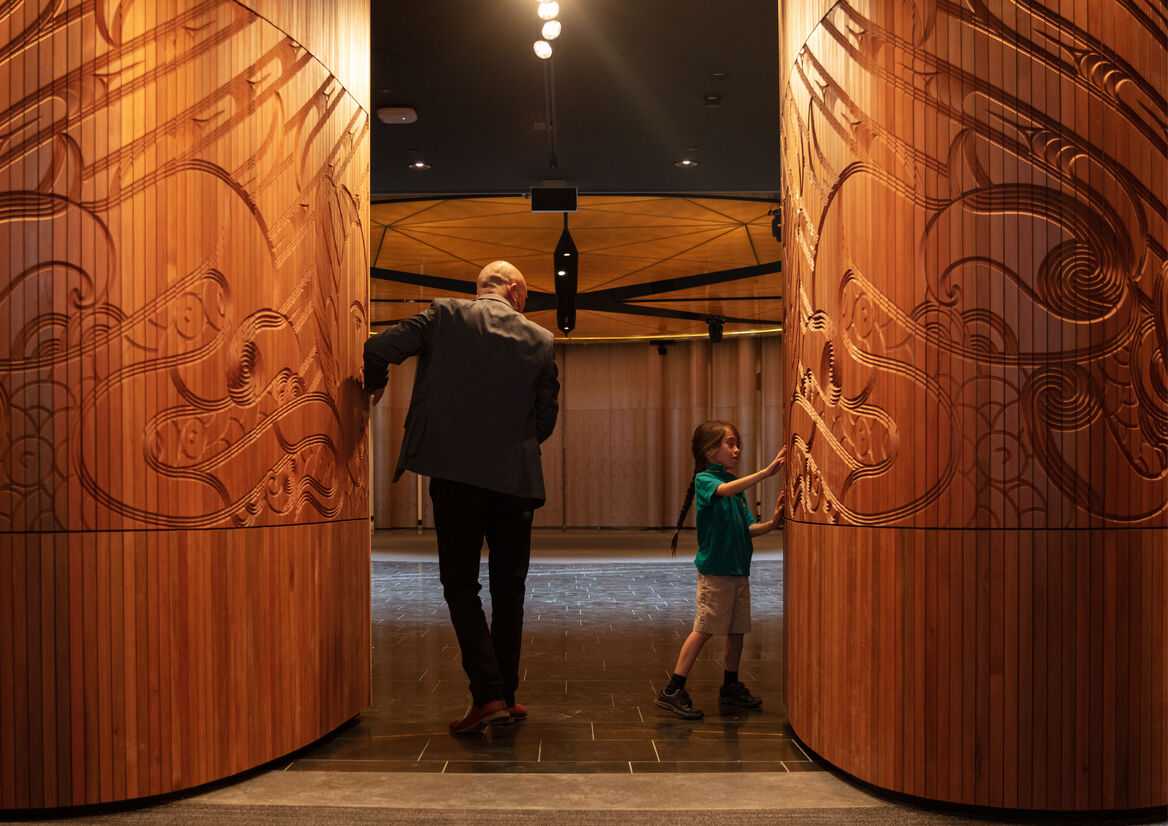
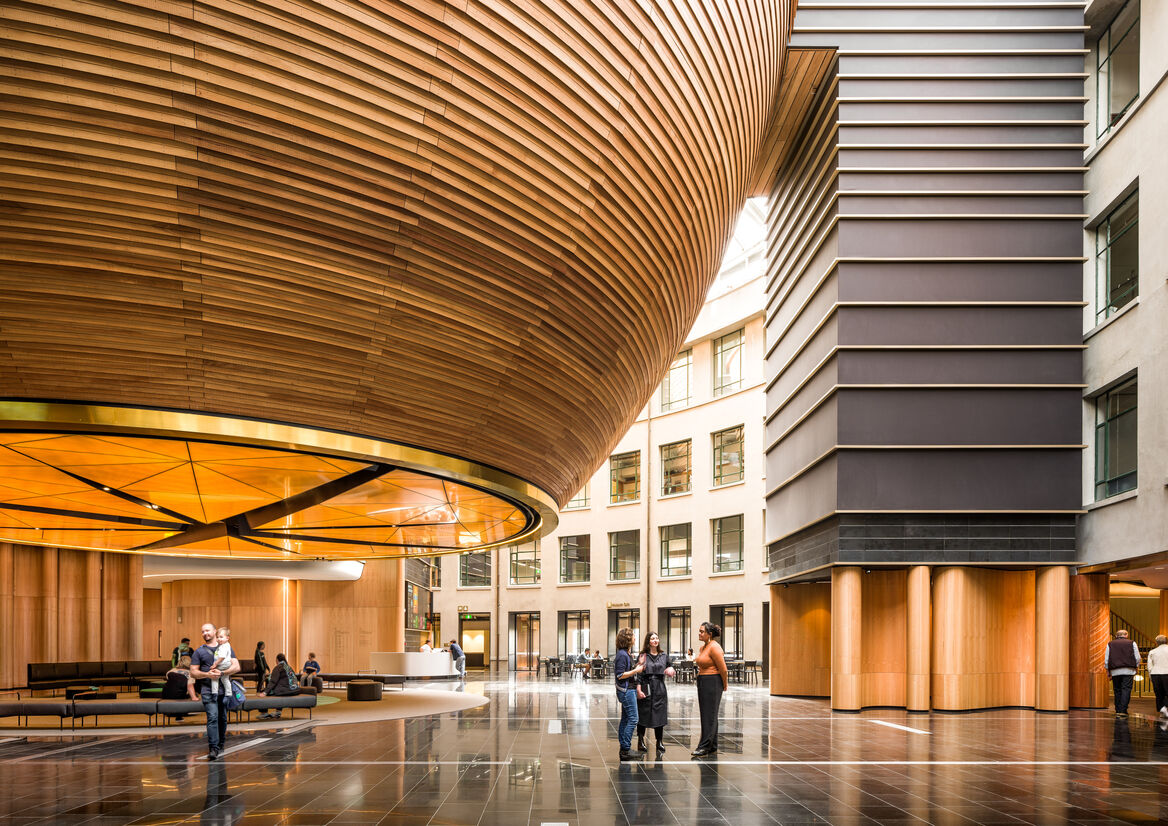
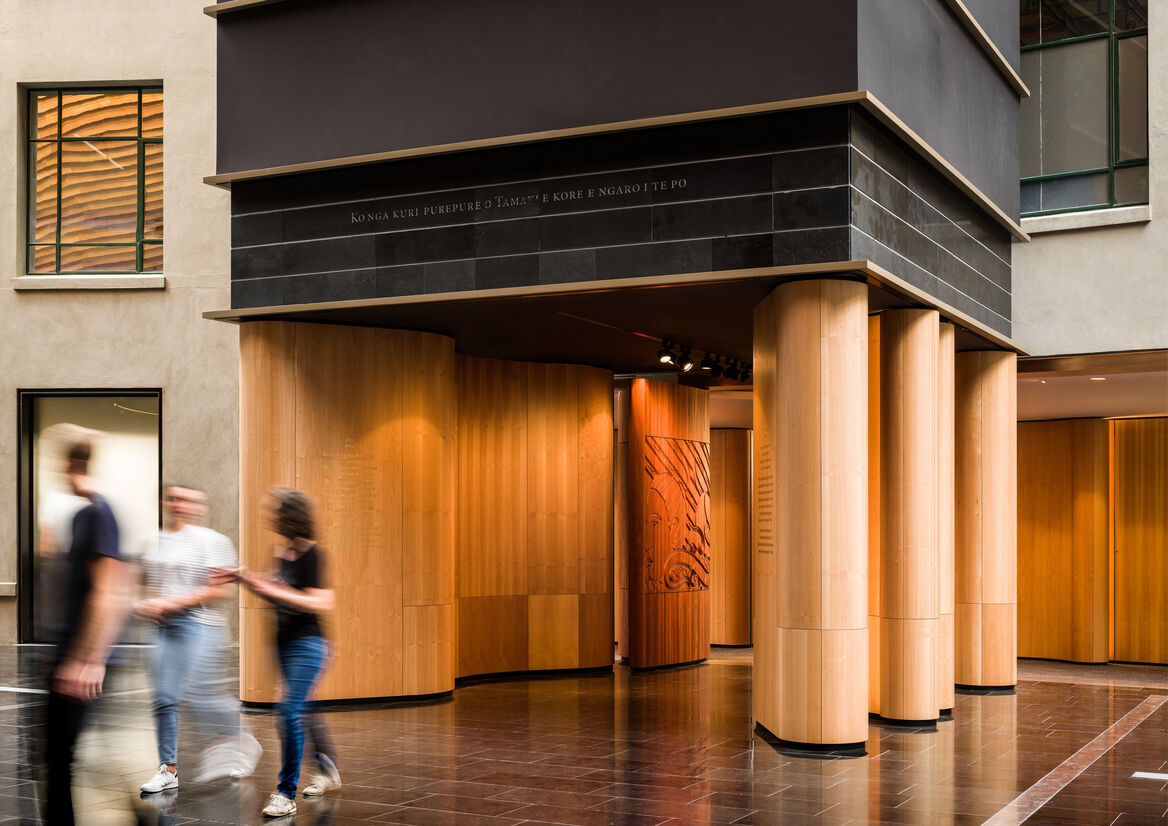
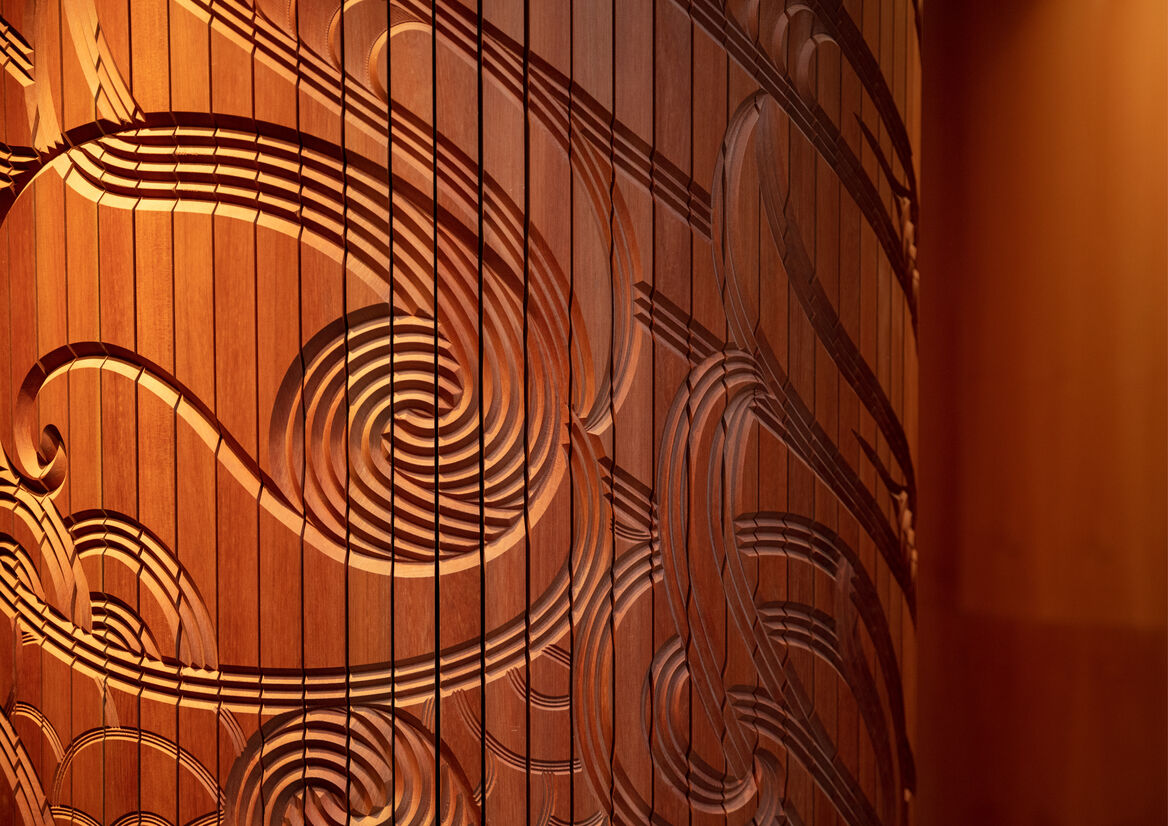
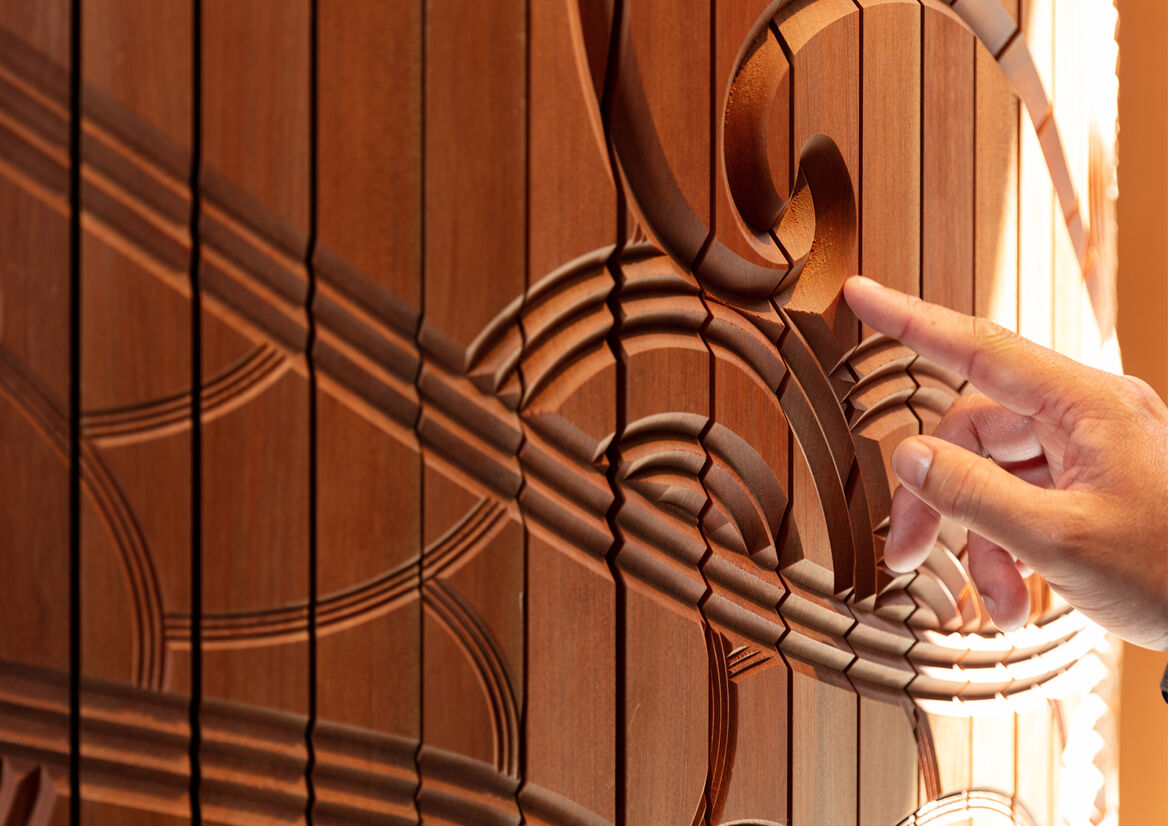
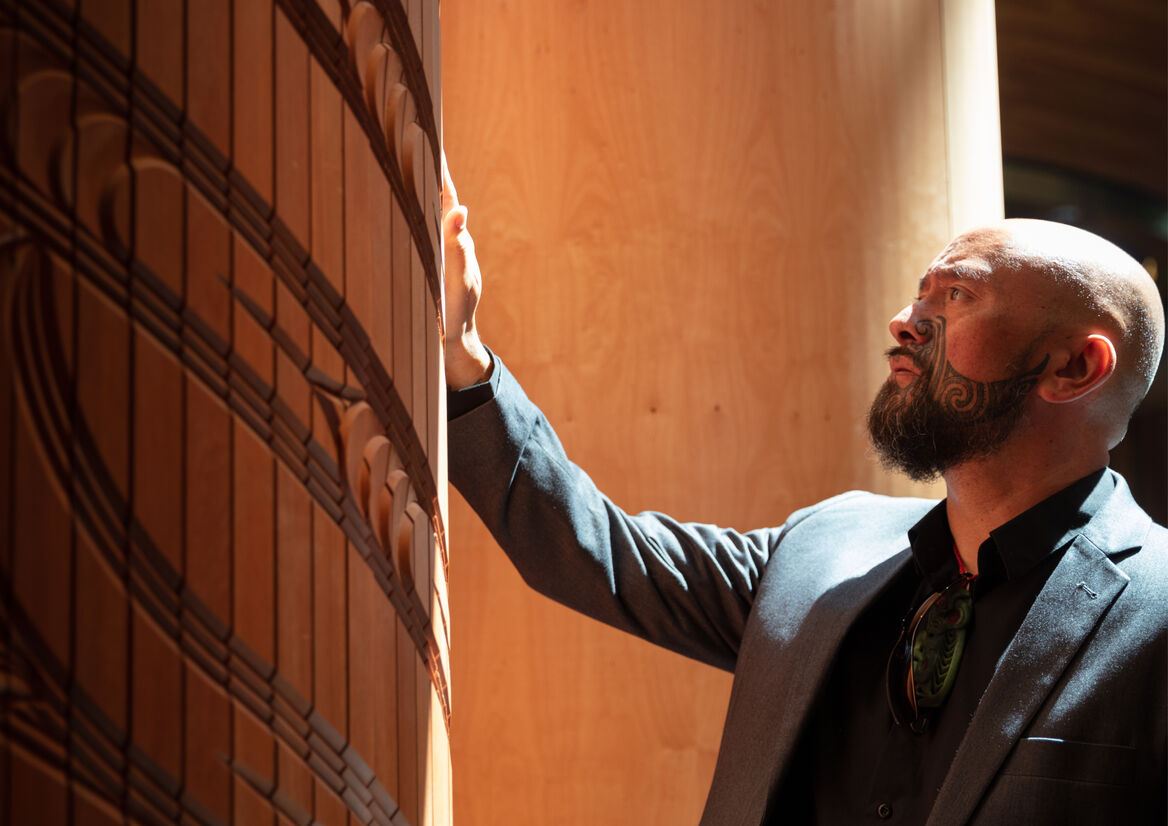
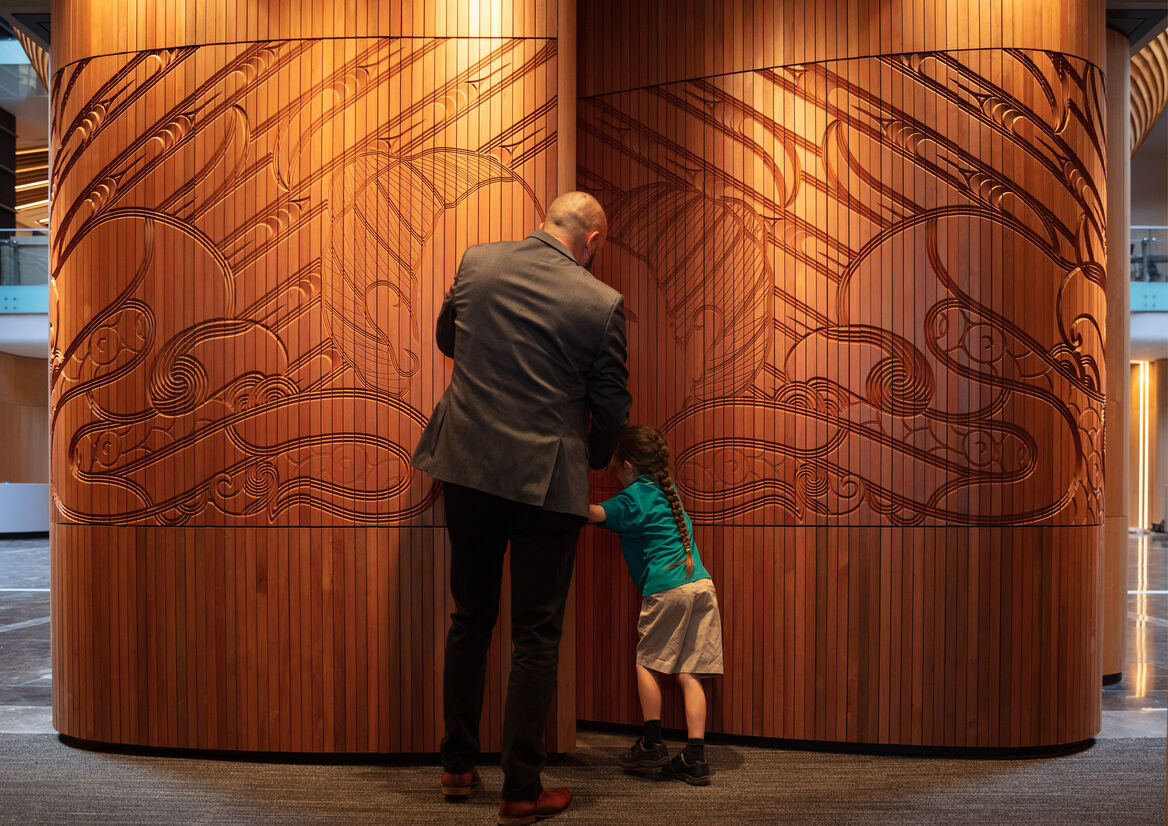
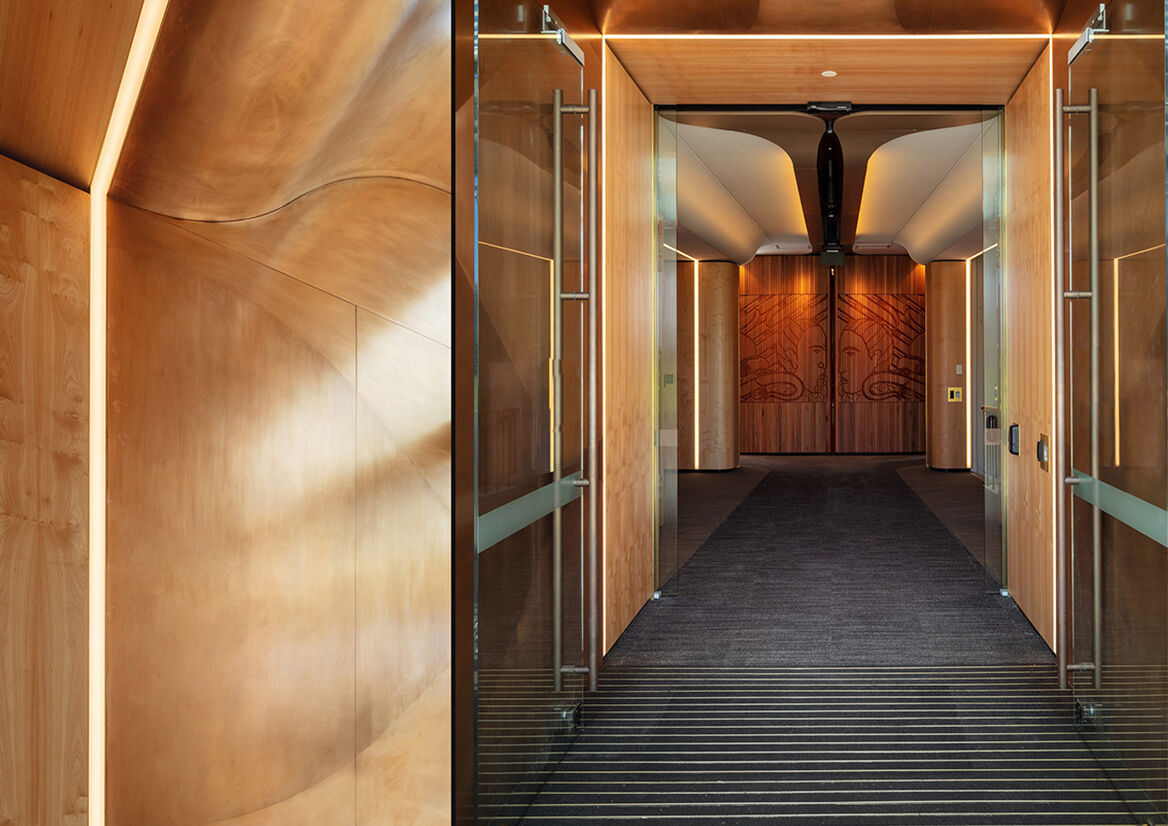
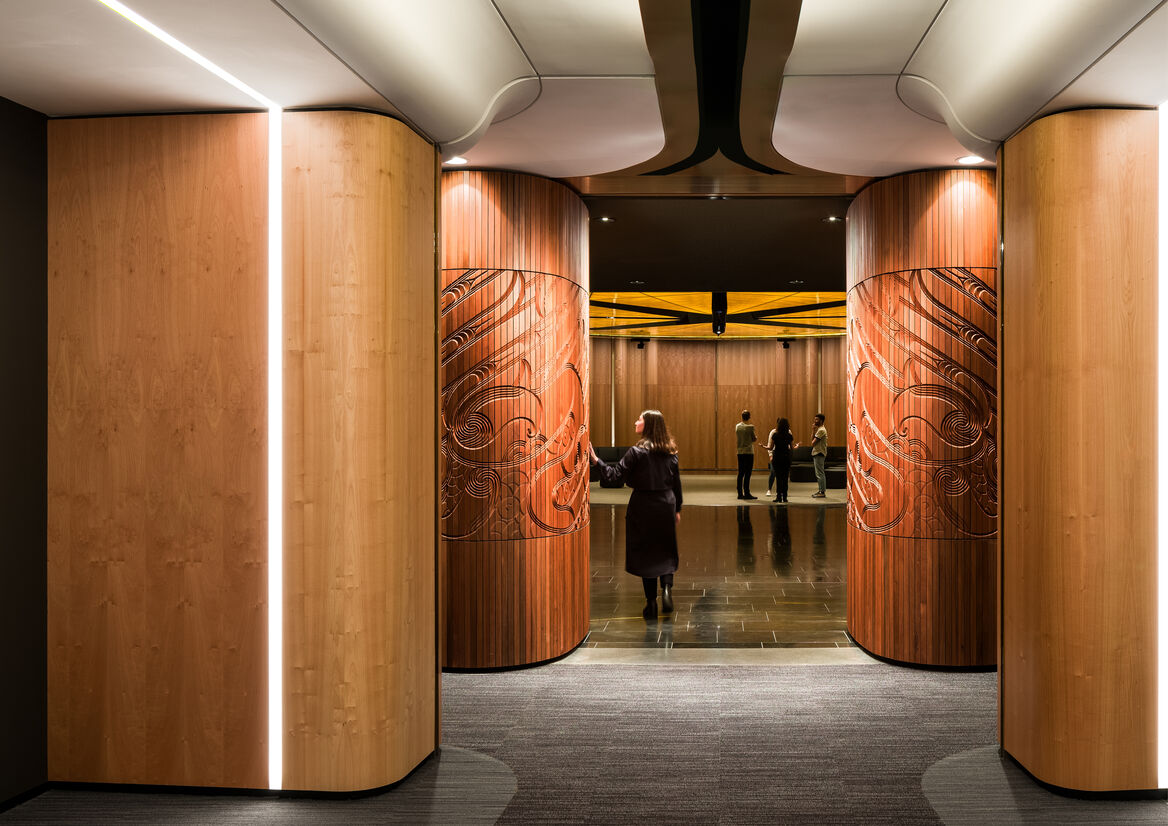
Description:
Graham Tipene - Artist's statement
Ehara taku toa i te toa takitahi engari he toa takitini
My success is not mine alone. It is the work of many
This piece represents the first voice of welcome. It represents the mana (prestige) of women. It is guidance and learning. It is the land, the ocean, the people and the stars. It is guardianship through deities. It is a visual representation of all we seek to keep us connected to our past. This piece acknowledges this building as a kaitiaki (guardian) of taonga (precious Māori collections). This piece acknowledges change. This piece acknowledges the whakapapa (genealogy) of all who keep taonga safe.
When piecing this work together, I knew it was going to have multiple representations. The wāhine (women) are the karanga (cultural call of welcome) into the space. The kaitiaki represents guardianship past, present and future. The whakarare design in the rear speaks to change and growth. When the doors are closed, the piece is mirrored and represents old and new. The guardians are kaitiaki from the two Moana (harbours) on either side of the Auckland Isthmus. The tōtara used comes from the Mangakāhia Valley at the border of Ngāti Whātua and the northern tribes.
Story
The carving depicts two women coming together in a hongi: Kane Nepu Paora, the grandmother, and Mere Paea Tipene, the granddaughter, acknowledging tuakana-teina relationships (the senior to junior energy).
Below them are two manaia: Kaiwhare and Horotiu, who dwell in the waters on either side of the Tāmaki Isthmus. They represent an ancient and intangible connection to each rohe and the importance of the two waters for access between east and west. They are kaitiaki: guardians who keep us safe and evoke our appreciation of their role within our storytelling.
Photography
© Lightforge, © Daan Hoffman, © Auckland War Memorial Museum Tāmaki Paenga Hira
Judge's comments:
We loved how the design connects the past and also future generations, the artwork invites you in. We really liked how the project took inspiration from traditional design and how technology was used, that makes this project truly unique.